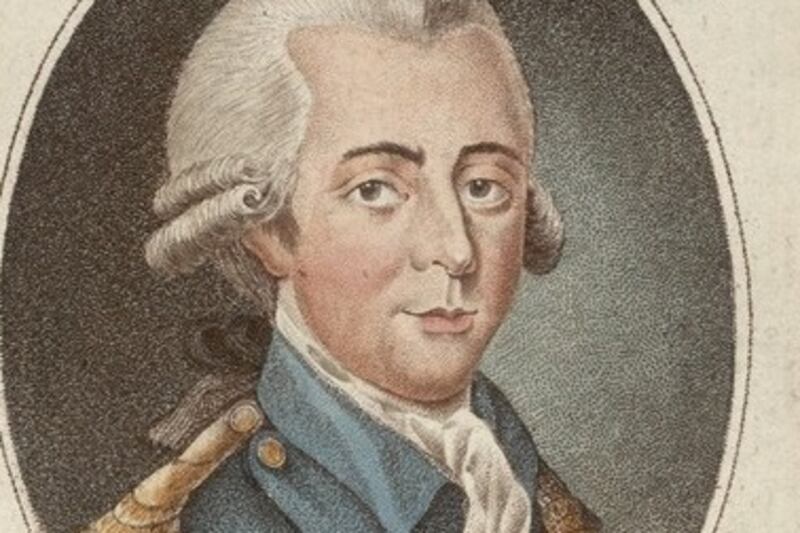The EU negotiators appear to be taking a great interest in Irish cows. A few months ago, it was Michel Barnier, posing for photographs in a field in Monaghan, surrounded by a herd of Friesians (or maybe Holsteins – the breeds have identical markings).
This week it was Guy Verhofstadt, visiting the same area and noting with approval that the local cows were oblivious to the Border. He himself was struck by the absurdity of an international frontier among the drumlins. And being Belgian, he invoked the surrealist painter René Magritte, whose pictures include one of a pipe with the title Ceci n'est pas une pipe ("This is not a pipe").
The Border, he implied, was also a mirage: “Certainly the cows couldn’t see it. Cows from the North eating grass from the South, milked in the North by a farmer from the South with their milk bottled in the South.”
One can understand the comfort these animals offer European visitors, especially when seen in fields: an increasingly rare thing in the countries where the breeds originated. And of course they do tend to be black-and-white, which must be very refreshing when you spend your days wrestling with the complexities of EU law or trying to work out what Mrs May’s latest speech means.
Taking the P-word – An Irishman’s Diary about the All-Ireland final
Death and syntaxes – An Irishman’s Diary about grammar
Still Life With Liffey – An Irishman’s Diary about art, literature, and internet celebrity
A Game of Two Calves – An Irishman’s Diary about Peter Kavanagh, St Columcille, and landmark cases in copyright law
But as for one, perhaps unintended, implication of Mr Verhofstadt’s metaphor – that Irish cows have no sense of direction – I feel bound to enter a caveat. A few years ago, in a landmark study, German scientists concluded that, like many animals, cows are sensitive to magnetic fields. And that, when not otherwise occupied (posing for photographs with EU Brexit negotiations or whatever), they align themselves accordingly.
It is for the same reason, I gather, that when going to the toilet, dogs first twist and turn, like compass needles, before finding the direction with which they’re comfortable. But in the case of cows, if I’m interpreting the Germans correctly, the natural tendency is to face magnetic north when grazing or at rest.
The study has since been challenged by other scientists using, for example, Google Earth images. These seemed to contradict the findings. Then again, there are many things that confuse the picture (and the cows), including overhead power lines. So while some of the original research may be flawed, the conclusion of bovine “magneto-receptive” capacity still stands.
On the other hand, there is the competing folk wisdom that, whenever the wind is blowing, cows will always face away from it, for obvious reasons. This is what Mark Twain meant when, anticipating the German scientists by more than a century, he included a fleeting reference to bovine orientation in The Adventures of Huckleberry Finn. Suspecting Huck to be an up-to-no-good townie, Mrs Loftus tests his farm-hand credentials with questions including this: "If fifteen cows is browsing on a hillside, how many of them eats with their heads pointed in the same direction?" By answering "All fifteen", Huck passes the exam.
But if that’s also true, then given the prevailing wind direction in Ireland, cattle here would not be facing magnetic north – which is Donegal, roughly – much. Those surrealist Monaghan cows that Mr Verhofstadt was admiring would instead spend most of their lives gazing towards Belfast, as if waiting for a breakthrough in Stormont.
It had escaped me until now, by the way, that René Magritte had a "cow period". But it's true. In 1947 to 1948, he embarked on an experimental phase known as his "période vache". Actual cows do not appear to have featured: the term was used in a figurative sense, by which Magritte played the Belgian bumpkin in rebellion against Parisian art snobs. The crudeness involved was an artistic dead end, however. He soon abandoned it, using his wife's supposed disapproval as an excuse. Thus ended a short episode of art history that Paul Simon inexplicably didn't write a song about: "René and Georgette Magritte with their cows after the war."
Anyway, getting back to pastoral metaphors for Brexit, I suggest the EU negotiators have been looking in the wrong part of the farmyard so far. The behaviour of cows is too confusing to be useful. Poultry, however, is another matter.
If I were Messrs Verhofstadt and Barnier, I would continually emphasise the combined dangers of a Stormont vacuum and Brexiteer cluelessness. I would also remind everybody of the North’s recent RHI scandal, with all those dangerously overheated barns. And against this backdrop, I would warn that it’s a matter of time, unless politicians are very careful, before the chickens start coming home to roost.





